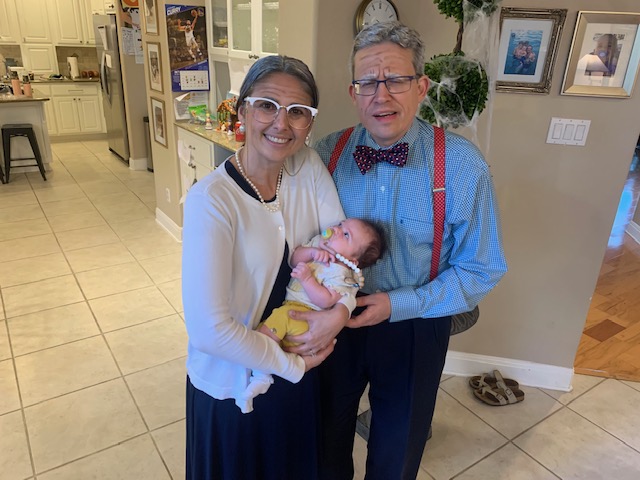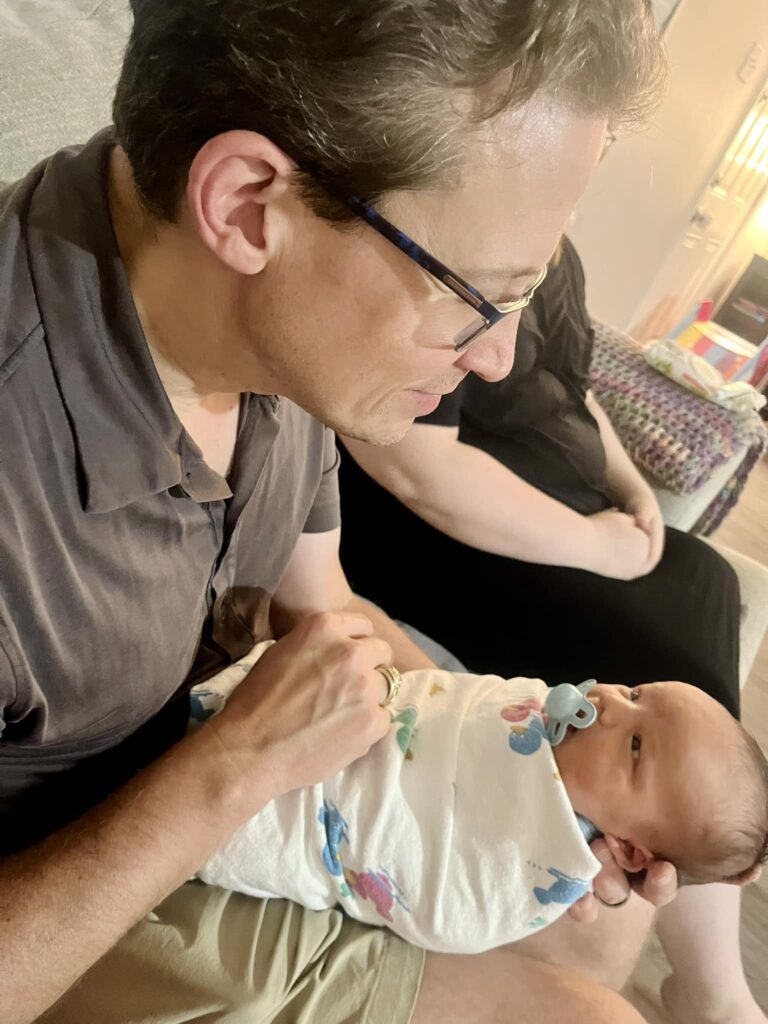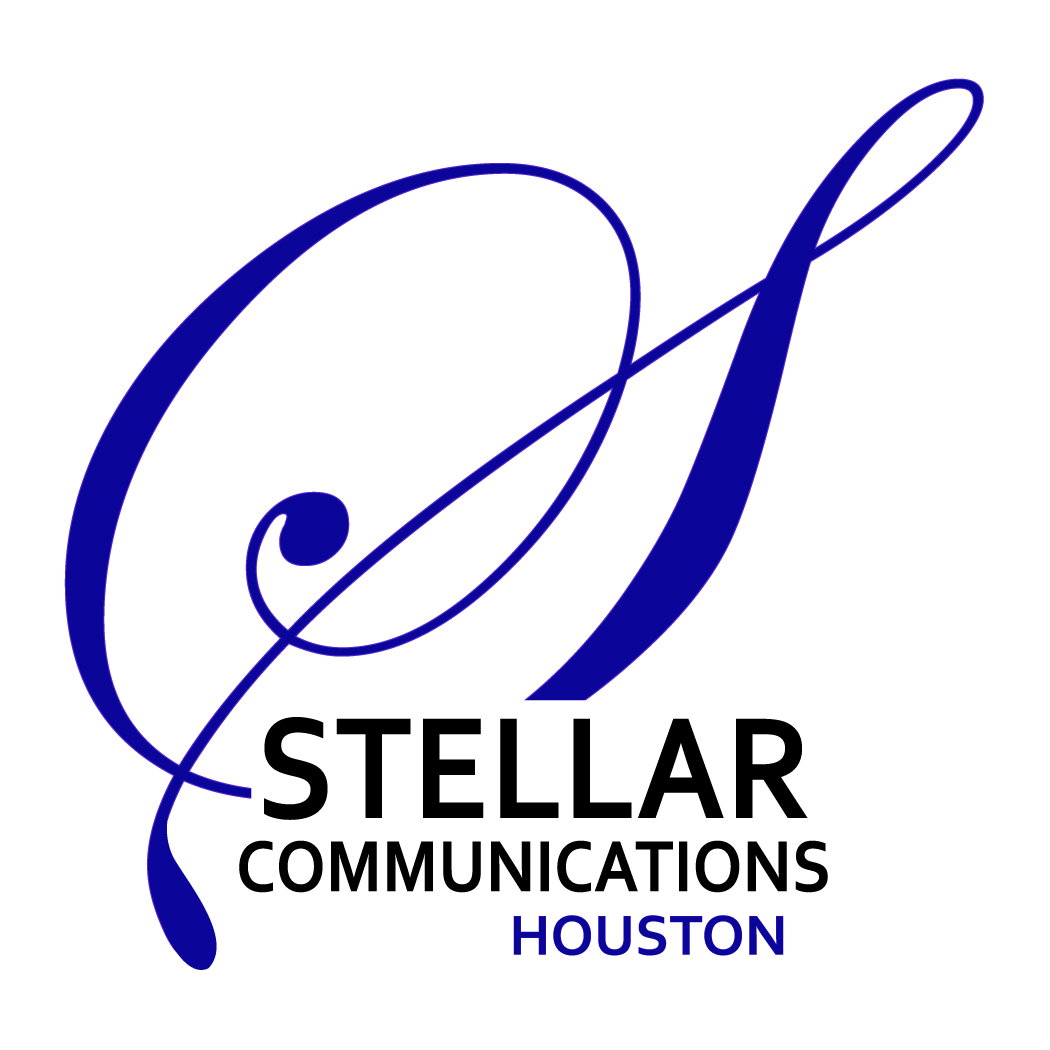Grandparenting is not what I expected.
When my husband and I found out several years ago that we’d become “Papa” and “Lala,” we were excited.
Then we looked at each other and laughed. Neither of us looked the part. We didn’t have the puffy white hair and slow-moving shuffle that we remembered of our own grandparents.
Our lives didn’t look the part, either. Our calendars were crowded with business trips, double dates, and the band schedule of the high schooler we’re still raising.

Halloween 2021. My husband and I dressed up as grandparents with our first grandbaby.
But bonafide grandparents we are. We’re singing “Wheels on the Bus” with Ms. Rachel, collecting pine cones on long walks, and generally doing whatever it takes to get a giggle. Our lives are naturally expanding to make room for these sacred new relationships.
And now we’re celebrating #3. Meet our third grandbaby, Peter James. (Dreamy sigh.)

The newest grandbaby sizing up his Papa.
Like so much in life, it’s all been delightfully surprising.
It got me thinking about nonfiction books. Authors often tell me the process of publishing and marketing isn’t what they expected.
So I asked industry pros and authors what they or their clients found surprising about the process. Here’s what they said.
Wintress Odom is the founder and editor-in-chief of The Writers For Hire. Her team ghostwrites nonfiction books, autobiographies, family histories, and memoirs for subject matter experts, business founders, C-level executives, families, hobbyists, and more:
“When a client initially calls us about ghostwriting, their first question is almost always, ‘How does this work?’ I think they’re surprised that we have no set process. There are common elements to each project, of course: interviews, outlines, research, writing, editing, proofing, etc. However, the process by which we work with clients is quite variable. I think they are pleasantly surprised at how flexible we are and how collaborative the work really is.”
Drew Gerber is the CEO of Wasabi Publicity, Inc., which partners with nonfiction authors to highlight their expertise in top venues such as Good Morning America, Forbes, CNBC, Harvard Business Review, USA Today, and Real Simple:
“One surprising aspect of PR is the speed at which the media world moves. While your publicist manages the initial steps, it’s crucial for you to be accessible when media outlets come knocking. Missing that call or email could mean losing a game-changing opportunity. This is especially true for securing coverage in top-tier outlets.”
Alison Nissen, DTM, is the founder of Reveal Coach Story, which offers group and private coaching for those who wish to share business and life solutions in a non-fiction book that they write with the help of a guide:
“One thing that often surprises my clients is the magnitude of AUDIENCE. Initially, many think of their work as sharing personal insights or stories for a specific group, but they quickly realize there’s a ripple effect. Their message can impact secondary audiences, like families, communities, or industry peers, in ways they didn’t expect. Understanding these additional layers of influence allows clients to shape their nonfiction work more thoughtfully, ensuring their book reaches and resonates more deeply than they’d imagined.”
Carla Green is the founder of Clarity Designworks, “your book’s best friend.” She supports authors with expert cover design, interior layout, e-book formatting, and guidance every step of the way from purpose to publication:
“‘Wow, it looks like a real book!’ That’s often what my clients say when they see their book’s interior completely formatted for the first time. They’ve been living with their manuscript – likely 8.5×11 pages of double-spaced text – for many months, and to see it take shape with well-designed chapter titles, page numbers, headers, and subheads catches them by surprise. Nonfiction books, in particular, benefit from thoughtful design, and when the author sees their words transformed into easy-to-read book pages, the light at the end of the tunnel gets even brighter for them. I love to be a part of that experience.”
Marjory Hawkins is a ghostwriter, the founder of Hawkins PR, and the author of Artful Wisdom Colorful Advice, a gift book of life quotes and her own Outsider-style art:
“One positive is just getting a ghostwriting client to tell his or her story — the successes and challenges. Once we figure out a good template to best work together, it’s quite enjoyable. The very positive reviews my authors have received have been a nice surprise for them! One author discovered she loves doing podcast interviews, which surprised her.”
Jay Rubin is a managing partner of Emspire, an organizational growth team, and the author of Daily Emspirations, an anthology of Reiki-inspired writings:
“It’s surprising how something as wonderful as writing a book is such hard work to get to market. One of the greatest joys in my life has been writing and self-publishing the spiritual book that had been in my mind’s eye for the better part of my life. The process was as energetically invigorating as it was arduous to maneuver taking the finished product to market. It truly takes a village of like-minded and focused souls to advise, support, and guide you along the way.”
Rebecca Franks is an editor and the founder of Flyfolio Communications:
“One very unexpected part of the publishing process I recently learned: it’s far more complex than it looks and best left to professionals. While DIY can be tempting, it usually sacrifices quality and timing. Recently, I managed a book project from start to finish, and I’m glad I hired experts for areas beyond my editing specialty—especially formatting, which was much more intricate than I’d imagined. It’s worth every penny.”
Shane Stedron is a systems manager at Advanced Print & Finishing, a turnkey trade finishing company that produces paperback and hardcover books using digital and offset printing:
“With self-publishing, a frequent comment that we hear from customers is how surprisingly straightforward book production is compared to the creative processes of writing, design, layout, marketing, and PR. With this in mind, our most satisfied customers are those who have had professional help on the creative side.”
Thank you for your insights!
